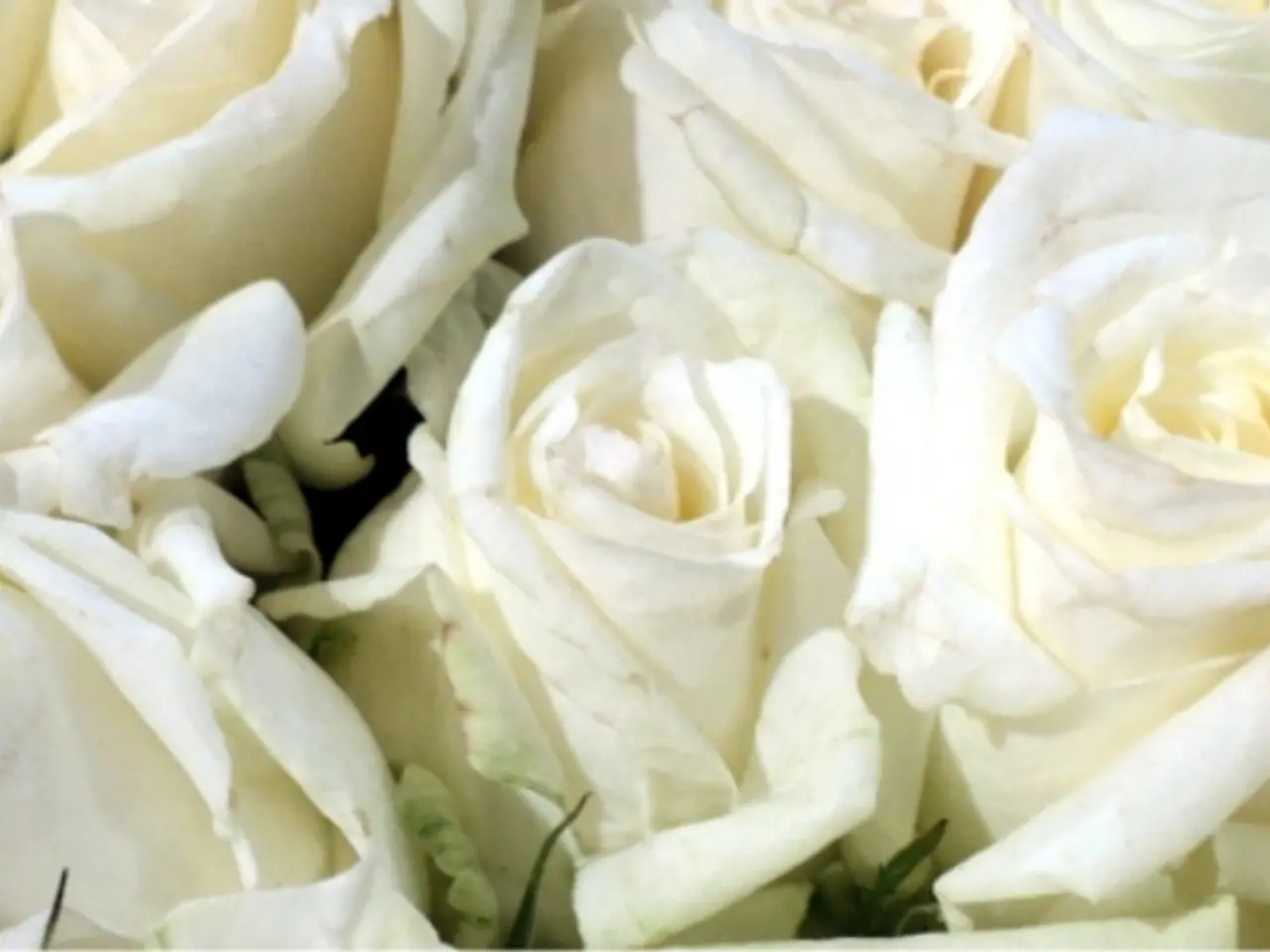Guidelines for Timing and Techniques in Rose Pruning for Vibrant Flower Production
In the world of gardening, roses hold a special place, and their care requires a delicate touch. Here's a comprehensive guide on pruning roses, focusing on techniques that promote flower production and plant health.
Climbing roses, divided into once-flowering and repeat-flowering categories, each require specific pruning approaches. Repeat-flowering rose climbers are less vigorous and typically need minimal pruning beyond deadheading, while once-flowering varieties require more attention.
The base of the stem at soil level is where you'll find the grafting point of a rose. Shoots appearing from below ground or underneath this point are probably suckers. To remove these, follow the rose stem down to the point it grows from, clearing away the soil if necessary, and pull it away.
When it comes to pruning tools, hand pruners are the way to go. They allow for clean, straight cuts that minimize wound size, promoting quicker healing and less moisture loss. In contrast, hedge trimmers, better suited for shaping hedges and large shrubs, can reduce flower production by indiscriminately cutting off flower buds and potentially damaging the plant.
The key principles of pruning roses include:
- Timing: Prune roses ideally in early spring as leaves begin to emerge. This avoids cutting off buds prematurely and allows the plant to direct energy into new growth and flowers.
- Tool choice: Use hand pruners for clean, straight cuts that minimize wound size.
- Amount and type of cut: Remove about one-third of the total plant size, focusing on dead, diseased, or woody growth. Cut straight across each stem rather than at a 45-degree angle to reduce wound area.
- Deadheading: Throughout the growing season, snip off spent blooms by hand to encourage continued flowering without damaging new buds.
For once-flowering varieties, prune the flowered sideshoots on all the stems to two or three buds away from the main framework. In weeping standard roses, remove the new shoots growing at odd angles in the following spring to retain the 'weeping' appearance.
Miniature, or 'patio', roses need very little pruning. During the autumn, cut all the stems that have flowered to a new strong shoot near the crown of the plant for weeping standard roses. In the spring, trim the whole plant by about a third.
Most roses are budded or grafted on to the rootstock of a wild rose. Climbing roses produce new stems from existing ones, and it is essential to train the stems horizontally to produce a good display of flowers.
By following these guidelines, you'll ensure a bountiful rose harvest and a healthier, more beautiful garden. Happy pruning!
[1] RHS Pruning Roses: https://www.rhs.org.uk/advice/profile?PID=446 [2] The Spruce: How to Prune Roses: https://www.thespruce.com/how-to-prune-roses-1412230 [3] Garden Myths: Hedge Trimmers and Rose Bushes: https://www.gardenmyths.com/hedge-trimmers-and-rose-bushes/ [4] BBC Gardeners' World: Pruning Roses: https://www.bbc.co.uk/gardening/howto/pruning_roses [5] HGTV: How to Prune Roses: https://www.hgtv.com/design/outdoors/flowers/how-to-prune-roses-pictures




